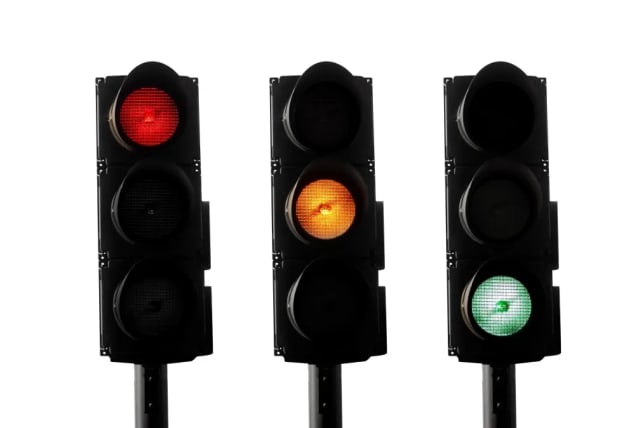Did you ever wonder why traffic lights are red, orange, and green?

Unveiling the reason behind the choice of colors for traffic signals.
Have you ever wondered about the rationale behind the colors of traffic lights? If so, your quest for answers ends here.
To uncover the origins of these familiar colors, let's take a journey into the history of traffic lights. The earliest warning signals were in the form of green and red lanterns, installed in London as far back as 1868, primarily to guide horse-drawn carriages. As the 19th century unfolded, the importance of traffic signals grew, becoming essential for managing the burgeoning railway and road traffic.
It was on August 5, 1914, in Cleveland, Ohio, that the first electric traffic lights were introduced, featuring the now-iconic red and green hues. Interestingly, these colors were borrowed from their previous usage in maritime contexts, where they denoted left and right on vessels.
The choice of red as a signal to stop has deep historical roots. Red has long been associated with danger and conflict due to its resemblance to blood and its long wavelength, making it highly visible and a natural choice for signaling drivers to halt from a distance.
Green used to signify caution
Initially, the agreed-upon conventions for traffic lights were different from what we know today. Green was originally intended to signify caution, while an exposed hexagonal white light granted permission to proceed. Tragically, this arrangement led to a grave train accident in 1914 when a locomotive misinterpreted the exposed light as a "white" signal. Consequently, white was replaced with green, and a flashing orange light was introduced to indicate the need for caution.
The Israeli version
In Israel, the debut of the first traffic light occurred at the intersection of Herzl and Balfour streets in Haifa in 1949. Haaretz newspaper described the traffic light as an "automatic light mechanism for directing traffic." A mere two years later, the Hebrew Language Academy coined the term "traffic light," once similar signals were installed at intersections in Tel Aviv.
In addition, during China's Cultural Revolution, there was a proposal to replace the red light with green, associating the color red with progress and revolution. However, Chinese Prime Minister Zhou Enlai opposed this change, fearing it might compromise safety and lead to more traffic accidents. He firmly declared, "In my opinion, the red light is the light of the revolution, providing the safety necessary for revolutionary activities."
Jerusalem Post Store
`; document.getElementById("linkPremium").innerHTML = cont; var divWithLink = document.getElementById("premium-link"); if (divWithLink !== null && divWithLink !== 'undefined') { divWithLink.style.border = "solid 1px #cb0f3e"; divWithLink.style.textAlign = "center"; divWithLink.style.marginBottom = "15px"; divWithLink.style.marginTop = "15px"; divWithLink.style.width = "100%"; divWithLink.style.backgroundColor = "#122952"; divWithLink.style.color = "#ffffff"; divWithLink.style.lineHeight = "1.5"; } } (function (v, i) { });
